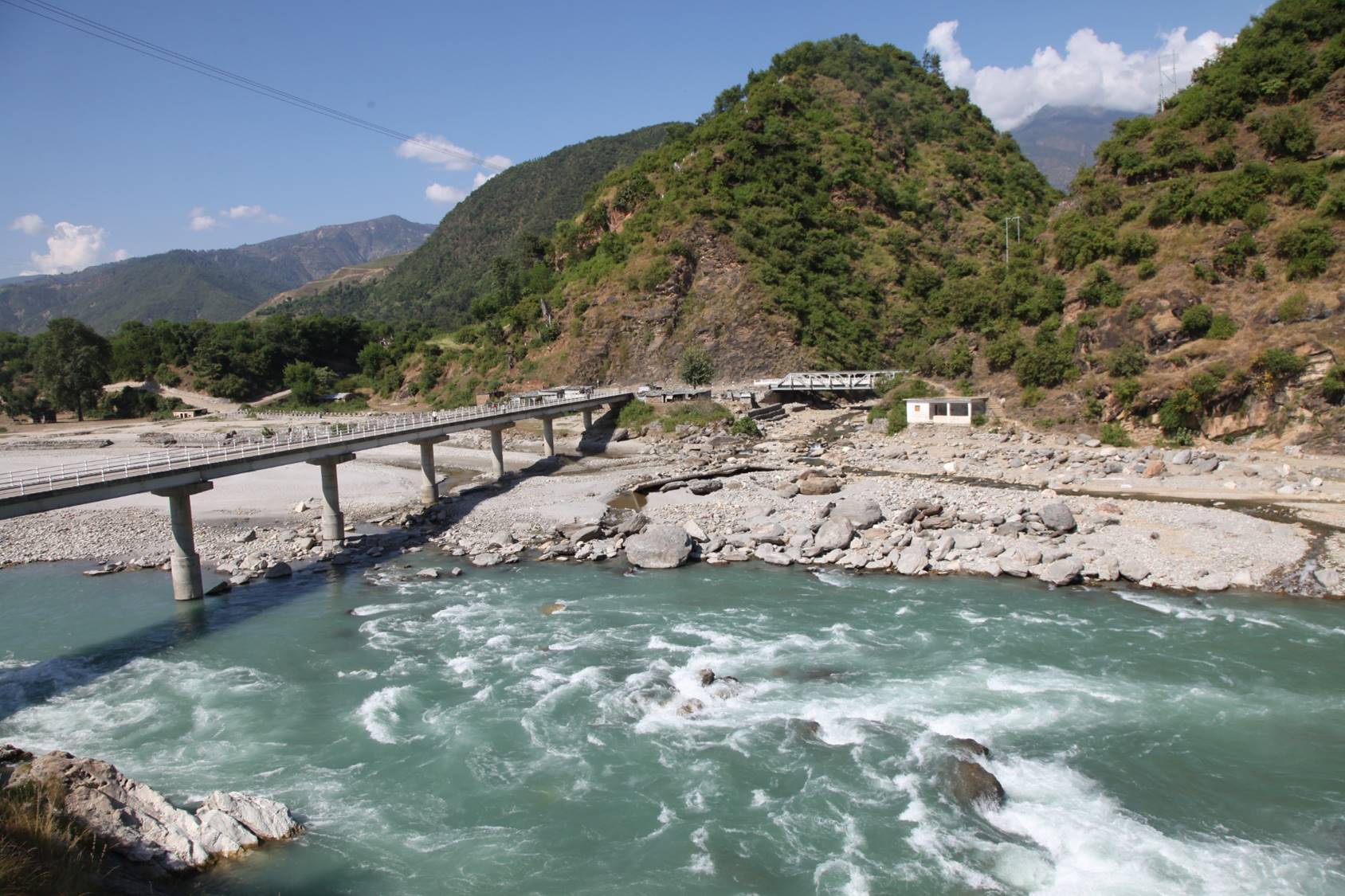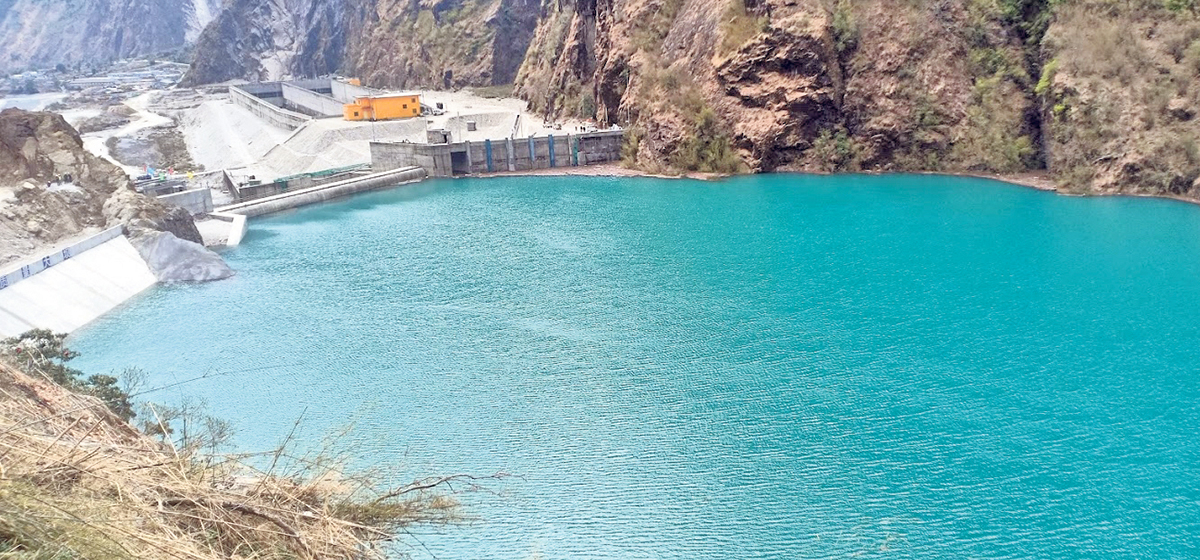Energy Update
India’s NHPC Limited applies to develop West Seti hydel project

The NHPC Limited, an Indian government hydropower board under the Ministry of Power, has submitted a proposal to develop the West Seti Hydropower Project.
Multiple officials confirmed to the Post that the Investment Board Nepal has received a formal proposal from the NHPC Limited, formerly known as National Hydroelectric Power Corporation, for the development of the project to be built on the Seti river in far-western Nepal.

“On May 12, we received a formal proposal from the NHPC Limited,” Amrit Lamsal, spokesperson for the Investment Board Nepal, told the Post. “A technical committee of the board will study the proposal.”
Besides the NHPC, the board has also received two more proposals from other companies, whose names Lamsal refused to disclose.

The West Seti project, whose revised installed capacity stands at 1,200 megawatts and which has been talked about for the last six decades, suddenly gained momentum after Prime Minister Sher Bahadur Deuba, while addressing a gathering in Dadeldhura on May 10, just ahead of the local elections, said that he will discuss the project with Indian Prime Minister Narendra Modi during the latter’s visit to Lumbini.
Modi paid a daylong visit to Lumbini on Monday. The Nepali side tabled the project during the delegation level talks.
“Development of the West Seti project was part of the discussion during the meeting between Prime Minister Deuba and Modi,” the Ministry of Foreign Affairs said on Monday evening.
According to a statement issued by the Foreign Ministry, Prime Minister Deuba invited interested companies from India such as the NHPC Limited to develop the West Seti project.
“The two prime ministers stressed the importance of hydropower for clean energy and noted that immense potentials exist for public private partnership (PPP) in the hydropower sector,” the Foreign Ministry stated. “Prime Minister Deuba invited interested companies from India such as NHPC Limited for the development of the West Seti project. The two prime ministers agreed to take up the Pancheshwar project with priority.”
On Monday, Nepal and India, however, signed an agreement to develop and implement the Arun-IV Hydropower Project in Sankhuwasabha in eastern Nepal.
Addressing a gathering in his hometown Dadheldhura on May 10, Deuba had said, “We failed to invest in the West Seti project. We will take up the matter with Prime Minister Modi during his visit.”
“Since India is reluctant to purchase energy produced by Chinese companies in Nepal, we will hold talks with Modi for the engagement of Indian developers,” Deuba added. “There is a need for decisive negotiations with a reliable Indian company for the development of the project. We need to invest in storage-type projects for energy security in the dry season [winter].”
A Nepali official familiar with the development said that after the proposal from the NHPC Limited was received it was communicated to the prime minister.
“The prime minister, who chairs the Investment Board, was aware of the proposal. Our line of thinking is we should hand over the project to a company that is reliable and financially and technically capable to build it in a time-bound manner,” the official, who was part of the delegation-level talks between Deuba and Modi, told the Post.
Due to its bitter experiences with several past contractors who failed to meet project construction deadlines, Nepal now wants a developer that is capable of completing the job on time, according to another official.
Lamsal said that owing to time constraints, the IBN board could not sit to discuss the West Seti project and the NHPC proposal. A day after the Investment Board received the NHPC proposal, Nepal went to the polls on May 13, and Modi arrived in Lumbini on May 16.
“Our technical committee will review the proposal and will invite the NHPC Limited for further discussions if we find the Indian company’s terms and conditions acceptable. Then the board will take the matter further up,” said Lamsal. “The project should be built under the public-private partnership model whereby the Indian company has to return the project to the Nepal government in good condition after certain years.”
As per the NHPC Limited website, it is the largest organisation for hydropower development in India, with capabilities to undertake all the activities from conceptualisation to commissioning in relation to setting up of hydropower projects.
The NHPC Limited has also diversified in the field of solar and wind power. It presently has an installation base of 7071.2 MW from 24 power stations.
The government has remodeled the West Seti project as West Seti and Seti River (SR-6), a joint storage project, with the capacity to generate 1,200 megawatts of electricity. This storage or reservoir type project will fill up during the monsoon season (mid-June to late September) and the water will be drawn to generate power during peak hours each day in the dry season.
As soon as Deuba was elected prime minister in July last year, the government decided to push the West Seti project forward. A panel headed by Biswo Nath Poudel, vice chairman of the National Planning Commission, was constituted to move the project ahead.
The panel members include secretaries from Law and Parliamentary Affairs, Energy, and Finance ministries, and the chief executive officer of the Investment Board Nepal, which oversees the project.
The project has been on the drawing board since the early 1980s. The project also attracted some geopolitical fissures in the last two and a half decades since the government issued the developing license to a French company and then to a renowned Chinese company.
The new development in the West Seti Project has taken place at a time when the southern neighbour has shown more interest in developing hydropower projects in Nepal and creating a sub-regional integrated energy market involving Bangladesh, Bhutan, India and Nepal, collectively known as BBIN.
During Deuba’s visit to India in early April, two countries issued a joint vision statement on energy, which talks about expanding mutually beneficial bilateral cooperation in the power sector including joint development of power generation projects in Nepal; development of cross-border transmission infrastructure; bi-directional power trade with appropriate access to electricity markets in both countries based on mutual benefits, market demand and applicable domestic regulations of each country; coordinated operation of the national grids; and institutional cooperation in sharing latest operational information, technology and know-how.
The two sides also agreed to expand such cooperation to include their partner countries under the BBIN framework subject to mutually agreed terms and conditions between all involved parties, according to the joint vision statement.
Former energy secretary Anup Kumar Upadhyay says Indian companies are increasingly interested in developing hydropower projects in Nepal and they have been approaching Nepal by exploring the market by themselves.
“The growing interest of India and its companies to develop hydropower in Nepal is also the result of India’s efforts at increasing the share of renewable energy in its energy mix,” said Upadhyay.
Currently, around 74 percent of Indian energy needs are fulfilled by coal-based power plants. During the United Nations climate conference in Glasgow, Scotland in November last year, Indian Prime Minister Modi announced that India was aiming to achieve net-zero emission status by 2070.
“Even to fulfil the international commitment, India has shown more interest in Nepal’s hydropower development,” said Upadhyay. “Hydropower is a more reliable and cost effective source of energy and it also complements solar energy perfectly.”
Conversation
- Info. Dept. Reg. No. : 254/073/74
- Telephone : +977-1-5321303
- Email : [email protected]














